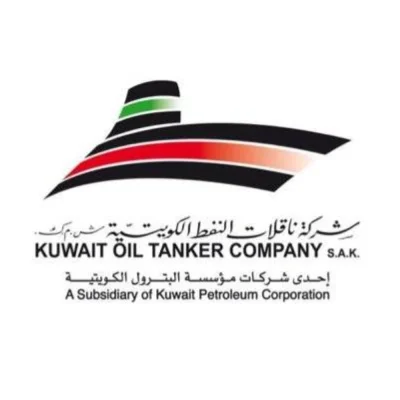Insurers in the Middle East and North Africa (Mena) exuded confidence as they expect premium to overgrow the region’s economy and find room for growth in view of low penetration, but are apprehensive of “excessive” competition and regulatory “deficiencies” as well as political risks.
Indicating strong confidence, 68% of respondents expect that the premium growth will exceed that of the region’s gross domestic product (GDP), according to Qatar Financial Centre’s Mena Insurance Barometer, released yesterday.
“Robust economic growth is anticipated to continue to be the most powerful driver of insurance market growth going forward. The region’s exceptionally low insurance penetration, at just one-fifth of the global average, and a bright outlook for personal lines business are considered key long-term opportunities for the sector,” said the report, prepared by Dr Schanz, Alms & Company.
The region’s favourable demographics — in most countries the average age of the population is below 30 — ranks second, boosting demand for personal lines insurance as motor, homeowner’s property, life and pensions.
Other strengths include a relatively moderate natural catastrophe exposure (in the Gulf region, the Levant and Egypt) translating into comparatively low and stable loss ratios, continued government spending on infrastructure projects and generally liberal market access.
Observing that premiums in the Mena insurance markets accounted for just 1.3% of GDP, a fifth of the global average, it said: However, this gap is narrowing as Mena insurance markets have outpaced GDP growth recently and this major growth potential is viewed as the main market opportunity.
“By closing this gap, insurers could multiply their current annual premium income of around $15bn for the GCC region and of more than $40bn for the wider Mena region,” QFCA managing director Abdulrahman al-Shaibi said.
Between 2007 and 2011, total non-life and life premium volume in the region expanded from about $26bn to $42bn, it said, adding at a share of less than 16%, life business continues to play a relatively minor role even though it grew slightly faster than the non-life market (at an annual average real rate of 10% compared to 7.5%).
Finding that Turkey, Iran, the UAE and Saudi Arabia accounted for almost three-quarters of the total premium pot, it said Qatar’s share was a mere 2%.
It found a strong outlook for personal lines, driven by additional compulsory schemes in the Gulf region (as governments move away from the concept of ‘cradle to grave’ protection) and Northern Africa, as well as a strengthening of private health insurance in Turkey.
However, the barometer found that high levels of competition and a resulting pressure on technical results — acquisition costs in particular - are the most relevant perceived weakness of the Mena insurance marketplace.
“This is particularly true for the GCC, although less so in North African insurance markets,” it said. On the regulatory “shortcomings”, the barometer found that 56% of respondents believe the overall state of insurance regulation in the region to be “inadequate”.
Observing a lack of supervisory consistency across the region, it said regulatory differences across the region are considered to be “huge”, ranging from relatively effective and sophisticated regimes in Bahrain, Jordan, Morocco and Saudi Arabia to basic and/or insufficiently enforced frameworks in several Gulf countries.
Besides, there were also high degree of fragmentation, a relatively large number of small players, which tends to make markets less stable and more price-driven; and a lack of technical expertise, which reflects insurers’ failure to be perceived as employers of choice and attract talent.
It also found shortcomings in solvency regulation, which is considered less sophisticated than the current European Union Solvency I regime; a lack of cohesion, transparency, consultation and implementation as well as inadequate regulations on insurers’ investments and reserving practices.
Finding that the Arab Spring has heightened awareness of political risk throughout the region, the report said it is widely perceived as being a catalyst and eye-opener for political risk insurance.
However, the market remains of marginal size as too little cover is actually bought and re-insurers and specialist insurers are reluctant to provide adequate (treaty) protection.
Potential of Takaful ‘overestimated’, say majority of Islamic insurers
Taking a critical look at Takaful, a vast majority of the insurance companies in the Middle East and North Africa (Mena) called for a “thorough review” of the Shariah-principled risk cover model as the potential of Islamic insurance has been “overestimated”.
Only 38% of respondents expect the Takaful segment to outgrow total insurance premiums, according to Qatar Financial Center’s Mena Insurance Barometer.
Highlighting that business models for Takaful insurance are believed to be in need of a thorough review, it said 62% of respondents expect the segment to grow in line with, or at a slower pace than, the insurance market in general.
“There is a broad consensus that Takaful does not serve as a substitute to conventional insurance,” it said, adding many respondents feel that the potential of Islamic insurance has been “overestimated”.
However, the Arab Spring is expected to favour the prospects of Takaful, and possibly at the expense of conventional business, according to the barometer.
Based on an amended business model, which addresses the need to effectively share both profits and losses, it said takaful insurance might enjoy brighter prospects, in particular in the form of family (life) takaful solutions distributed through Islamic banks.



